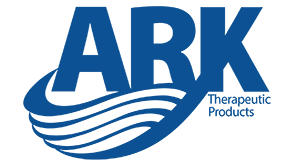Does Your Child Need Special Services at School?
27th Mar 2024
Do you think your child may need additional resources to effectively learn at school? Written by a Special Education Teacher, this article is an introduction to the different tools and resources available to have your child’s needs met at school.
Whether you have general concerns or are already anticipating the need for special education, this guide will cover the various stages and options, including Response to Intervention, 504 Plans, and Individualized Education Plans (IEPs).
.

.
The First Stage: Response to Intervention
When considering special education services, many people think that help is only available is through the Special Education Teacher, but there are actually lots of additional resources available for students today. Many schools have adopted a multi-level approach to meeting a student’s needs at school. This approach is called Response to Intervention (RTI). It consists of three levels of intervention, with each level being more intensive than the last:
- Level 1 interventions are experienced by every student, regardless if they have special needs or not. These interventions include visual aids, hands-on learning activities, developmentally appropriate goals, and having multiple chances to practice a new skill in the classroom.
- Level 2 interventions are more selectively applied to a smaller number of students, for an extra measure of instruction for them. This may include small group instruction given to students who are identified as at risk of not meeting standards in more than one area.
- Level 3 interventions are more intensive services that are given as a last step before considering a 504 Plan or an Individualized Education Plan (IEP). These interventions include one-on-one time with a professional, often called a “coach”, trained in math or reading.
The goal of the RTI three-level system is to ensure each student is getting the right level of intervention they need. Special Education services are even more intensive than level 3 interventions, and can lead to a change in learning environment, so the three levels are there to catch any students that may have additional needs in the classroom, but don’t need a more intensive special education setting.
The Next Stage: A 504 Plan
Sometimes, students can successfully start meeting learning goals after receiving level 2 or level 3 interventions in RTI temporarily. For example, a student may need a little extra support with RTI to start meeting classroom goals, and once they get going, they no longer need that support.
Other students may benefit from keeping the level 2 or 3 RTI accommodations in place consistently. A 504 Plan is a learning contract between the school, teacher, and parents that states the student will continue receiving these accommodations that aren’t available to the entire class. Having a 504 Plan doesn’t mean your student receives special education services; it’s just a way to ensure your learner can use the accommodations that allow them to learn at the same level as their peers, while staying in the general education environment.
On the other hand, not every child will have to start at Level 1 in this process. For example, a child with significant developmental delays would not be required to start at Level 1 RTI–each child’s journey through evaluation could look different.
Typically, a child who has received services from specialists since birth, and has not met the expected milestones before kindergarten, will most likely be evaluated by the school district for special services before they start school. As another example, if a school-age student experiences a sudden illness, or accident that significantly impedes their learning and causes them to need special education services, then the school district can gather any necessary data to begin the special services process.
For more information on 504 plans, click here.
The Next Stage: Requesting Evaluation for Special Services
If a student is not having success meeting learning goals by using any of the three RTI tiers, or a 504 Plan, then they may qualify for special education services.
Anyone can request an evaluation for their child to see if special services are necessary. Commonly, students are identified as needing special services by school officials or teachers. For example, a federal law called Child Find requires public schools to identify and evaluate children who may need special services, from birth to age 21.
Once a need for special services is identified, the school must evaluate the student to determine which level of services is needed. Many younger children (ages 3-5) who use early intervention services will be referred to the school district for an evaluation of services needed as they move to pre-K or kindergarten. After kindergarten, schools use benchmark testing in grades 1-12 to identify students who may need special services.
As a side note–even though the Child Find process is in place in public schools, any parent, legal guardian, or teacher can request an evaluation for a student at any time, according to the Individuals with Disabilities Education Act (IDEA).
For more information on Child Find, click here.
For more information on IDEA, click here.
What is the process for evaluation?
Requesting an evaluation does not always mean the school will agree to perform the evaluation–the school must have reason to believe the student has a disability before doing an evaluation. This requires academic testing, along with a team of professionals to evaluate your student. This could include the school psychologist, Speech/Language Pathologist (SLP), Occupational Therapist (OT), an Assistive Technology evaluation (AT), or a Physical Therapist (PT).
Depending on the school district, and the severity of the student’s needs, a parent/legal guardian may choose to provide outside documentation from other professionals that demonstrates the need for special services. The process of evaluation is always the parent’s final decision–if the parent/guardian does not consent to an evaluation, the process stops and the student will not be offered special services.
Each school has a different process for requesting an evaluation. Most schools will request either a signed consent form, or a letter from the parent/guardian consenting to the evaluation. After that, the school will perform their evaluation and share their findings with you once that is completed. For a timeline, once a school has a suspicion that a student has a disability or needs special services, they have 30 days to request parent consent to evaluate the student, according to IDEA.
What is the timeline for evaluation?
Schools are required by IDEA to complete initial evaluations of a student within 60 days of receiving parental consent. Altogether, this means the school has 90 days from the suspicion of disability to the completed evaluation. School districts are allowed to make their own timeframes, as long as it does not exceed 90 days. An exception to this 90 day rule was provided to most states in 2020 due to the COVID-19 pandemic. It’s important to read your school district’s parent handbook carefully, because there could be variations to the rules depending on your state. Regardless of variations, you should receive a written expectation for when the district will complete their evaluation.
Where does the evaluation take place?
While this could vary between school districts, most schools perform evaluations in the student’s current learning environment, as that provides the best understanding of the student’s needs. Students who have alternative learning environments, like learning at home, or while in the hospital, should be evaluated in those environments as well. IDEA does not provide strict rules on where the evaluation should take place, as long as it is free to the parent/guardian.
Once your student's evaluation is completed, the school will determine whether or not your student needs special services. If they do find that special services are needed, then data collection begins in order to form an Individualized Education Plan (IEP).
To learn more about IEPs, click here.
Note: this article was written by a special education teacher and represents their best knowledge of current practices at the time that it was written. Please feel free to check the resources linked above and/or check with your school to review and learn more.
.

